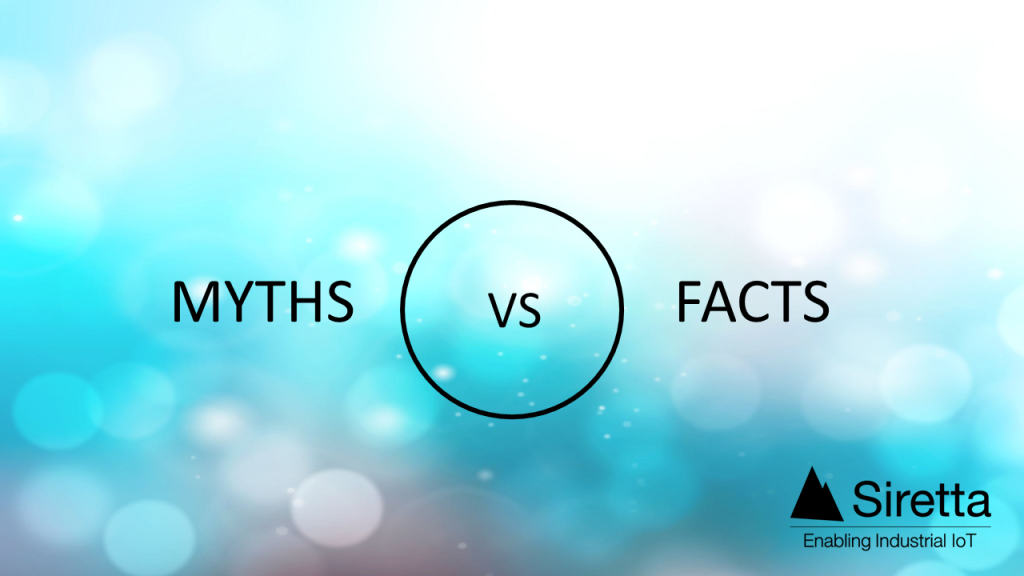
When it comes to ensuring signal strength and reliability for your IoT project the emphasis on an antenna can often be underestimated, sometimes driven by assumptions, sometimes because they look like simple pieces of technology – “how complicated can they be”, and on other occasions through lack of availability of good information.
Siretta is here to help when it comes to industrial IoT and so we have listed a number of myths vs. facts.
Myth: Don’t worry about the antenna, you can do that bit last.
Fact: The antenna will be one of the most important components in your application. Its performance often relies on the size of the ground plane, its own size/length and even its proximity to other antennas in your device. Sometimes the only way to improve the performance of your antenna is to adjust its positioning or increase the size of the ground plane. So, to minimise risk of delays in your project, consider antenna performance from the very start!
Myth: It’s only ever about getting high gain in one direction.
Fact: Gain is simply a measure of how much an antenna focuses RF energy in a given direction (compared to a theoretical ‘isometric’ antenna). A high gain antenna will radiate RF energy in a more focused and narrow direction, which means it will travel further and give you better signal but will make positioning trickier. A lower gain antenna will mean the opposite; you’ll have a wider beam and less range, but this is useful in applications where you want to broadcast your signal evenly to an entire room, building, or area.
Myth: There’s no requirement for monopole antennas.
Fact: As with many things RF, it depends on your application and requirements. Dipole antennas have a more balanced design and therefore a more consistent performance, plus they have a more significant ground plane. However, if space is a constraint, you might want to consider a monopole antenna and simply use the metal frame or PCB ground plane as the other part of the antenna to improve its performance.
Myth: Any antenna will do.
Fact: In theory, an antenna is an efficiently tuned and specialised transducer that converts radio-frequency fields into electric power and vice-versa. However, depending on where you get it from, it could just be a piece of wire… You can go on any cheap and cheerful e-commerce store and buy an antenna for 99p that says it performs brilliantly across the entire RF spectrum, but you would have no guarantee of its ability to perform as needed until you’ve received and used it and by then it’s too late.
Therefore, it is recommended that you go with a well-known and trusted manufacturer who make quality products. Siretta datasheets show the performance of our antennas from 0 to 6 GHz and are tested and certified by a third-party test lab so that you can be assured that what you are buying will perform as required.

